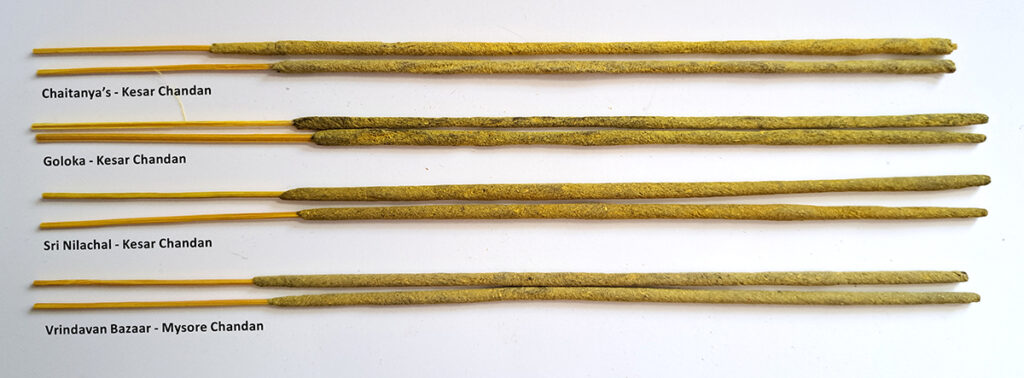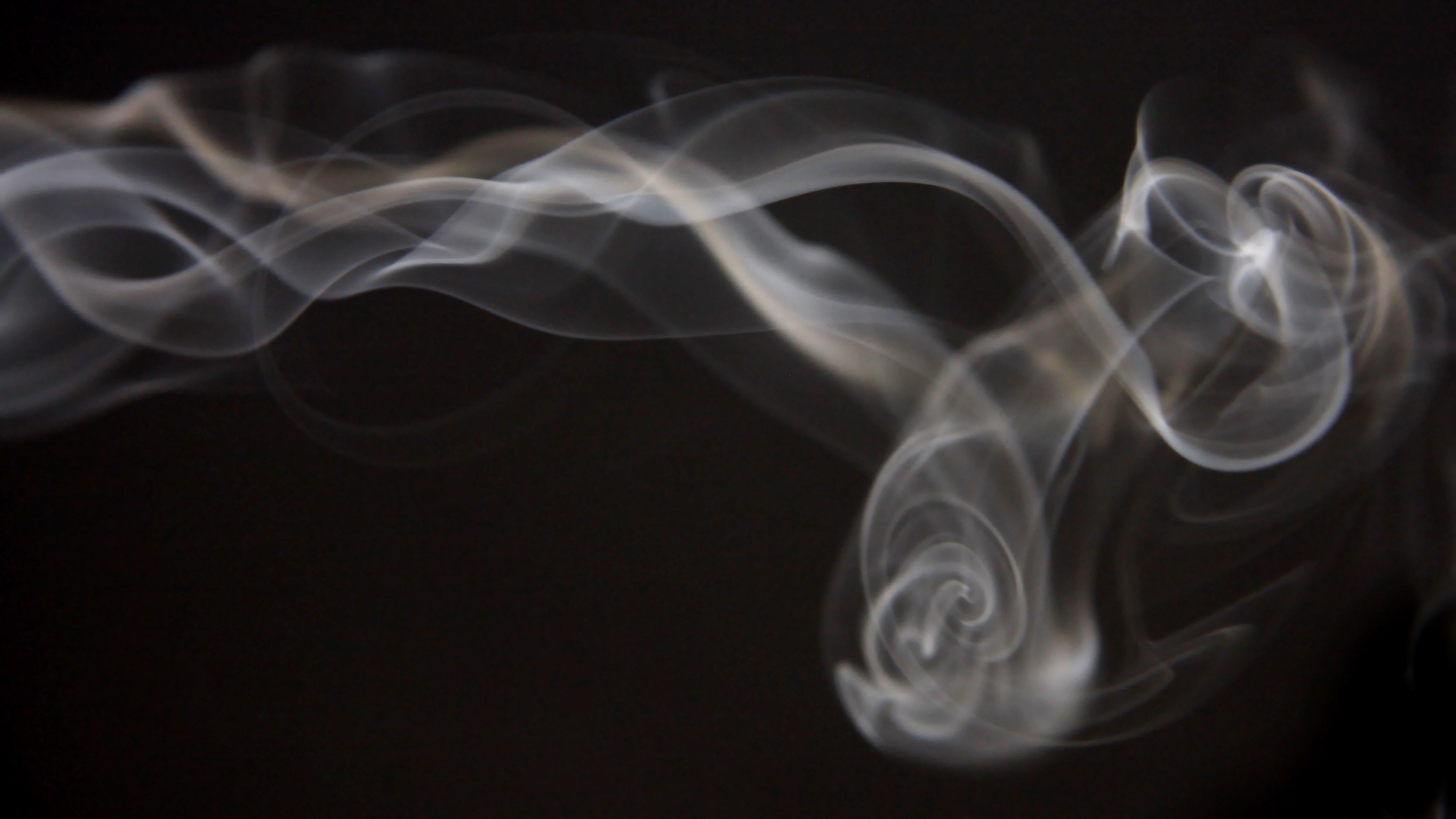Comparing Kesar Chandan Incense Sticks: Goloka, Vrindavan Bazaar, Sri Nilachal
My first encounter with the Kesar Chandan (saffron and sandalwood) genre was the sticks from Chaitanya’s, which I reviewed here. Since then, I have realised that not only is the fragrance concept popular, but exactly this style of yellow dry masala incense sticks is incredibly common. They are hardly distinguishable from each other in appearance:

From top to bottom: Chaitanya’s, Goloka, Sri Nilachal, and Vrindavan Bazaar.
Alright, I cheated a little with the last ones, as they are sold under the name Mysore Chandan, but as you can see, the sticks look like the others, and the smell is similarly close.
All of these incense sticks have that characteristic, peculiar spicy scent that reminds me of ironed fabric, new fabric bolts, or in extreme cases, toy revolver ammunition or iodine. This scent is paired with a creamy sweetness. In the reviews below, I will mainly focus on the differences between the individual brands.

Goloka – Kesar Chandan
These three sticks come from my incense friend Sascha’s private collection, who runs the Indiaroma shop. You can buy them at Ephra Word, where a 100g pack costs €6.95. It is one of the Goloka varieties that is sold here and in India in the same version.
Goloka strikes me as the sweetest of this selection. Its sweetness is almost a little too much for me, the kind I’d describe as ‘smeary’. It’s like an extremely rich cake cream that leaves one feeling fatigued after only a few bites.
Combined with the tart notes of the scent, these Kesar Chandan remind me slightly of a leather balm containing beeswax that I once had.

Sri Nilachal – Kesar Chandan
This sample also came from Sascha. He had bought them on eBay.
With Sri Nilachal, the specific note leans strongly towards toy revolver caps or maybe matchsticks, at least initially. The sweetness differs from the others in that I find it less creamy. It’s somewhat sharper, more like benzoin.
Scent-wise, these sticks sit somewhere between Goloka and the sticks from Vrindavan Bazaar, but they lack the interesting freshness of the latter. However, they are slightly spicier than all the others, almost a little cinnamon-y, which emphasizes the warm character of the scent.
It’s noticeable with Sri Nilachal that the scent is not entirely consistent during the burn. The piercing sweetness with the cinnamon-like tone occasionally flares up for a few moments. Only then it sets itself apart from the others in an apparent and noteworthy way.

Vrindavan Bazaar – Mysore Chandan
2025-06-03 Correction
Through Steve’s recently published article about Vrindavan Bazaar, I learnt about the two almost indistinguishable shop links and asked Silver again if I really had the right one. It turned out that she hadn’t realised the difference either and had inadvertently approved the wrong link. So her sticks actually come from vrindavanbazaar.com, not the shop linked below.
These sticks are from my friend Silver. Vrindavan Bazaar is not really a brand but an online shop in India that ships worldwide. Steve (Incense in The Wind) has also ordered from there. Here’s a picture of his haul.
The sticks come in neutral, hand-labelled bags. A 50g pack of Mysore Chandan costs ₹250, about €2.70. The product images often don’t match the actual sticks, as Mysore Chandan is shown as black sticks. There is also Kesar Chandan in the shop, depicted as yellow with orange bamboo, but who knows if that’s accurate. I’d however be interested in how they compare scent-wise to Mysore Chandan.
Mysore Chandan, the ‘incognito Kesar Chandan’, are the most tart and woody of the three. They also have a very interesting fresh note. It is vaguely mentholic, wintergreen-like; a scent I’ve encountered before in some Indian incense sticks described as containing camphor. However, it doesn’t smell like camphor to me.
A certain sweetness is present but rather subdued. It is similarly creamy to that of Goloka, but in no way obtrusive. Paired with the tart aspect, the scent sometimes reminds me of amaretto, an association I’ve also had with Chaitanya’s. These, however, are even more tart than Mysore Chandan.
I find this composition very well-balanced.
Conclusion
Overall, the differences are rather minor, and it also raises the question of how much batch variations within the different suppliers further relativise this. I wouldn’t rely on the sticks smelling exactly the same when reordering.
It’s also not unlikely that these companies all source from the same producer. This includes the incense sticks from Chaitanya’s.
It’s quite possible that there’s at least a connection between Vrindavan Bazaar and the Krishna Store (which sells Chaitanya’s). Sri Nilachal are also (according to Sascha) Krishna devotees, which would fit the picture well.
Which supplier you like to choose will depend on how much you value convenience, or whether you are willing to order directly from India.
In terms of scent alone, I liked the sticks from Vrindavan Bazaar best, followed by Sri Nilachal and Chaitanya’s, with Goloka coming last.


This can be a classic combination if done right!